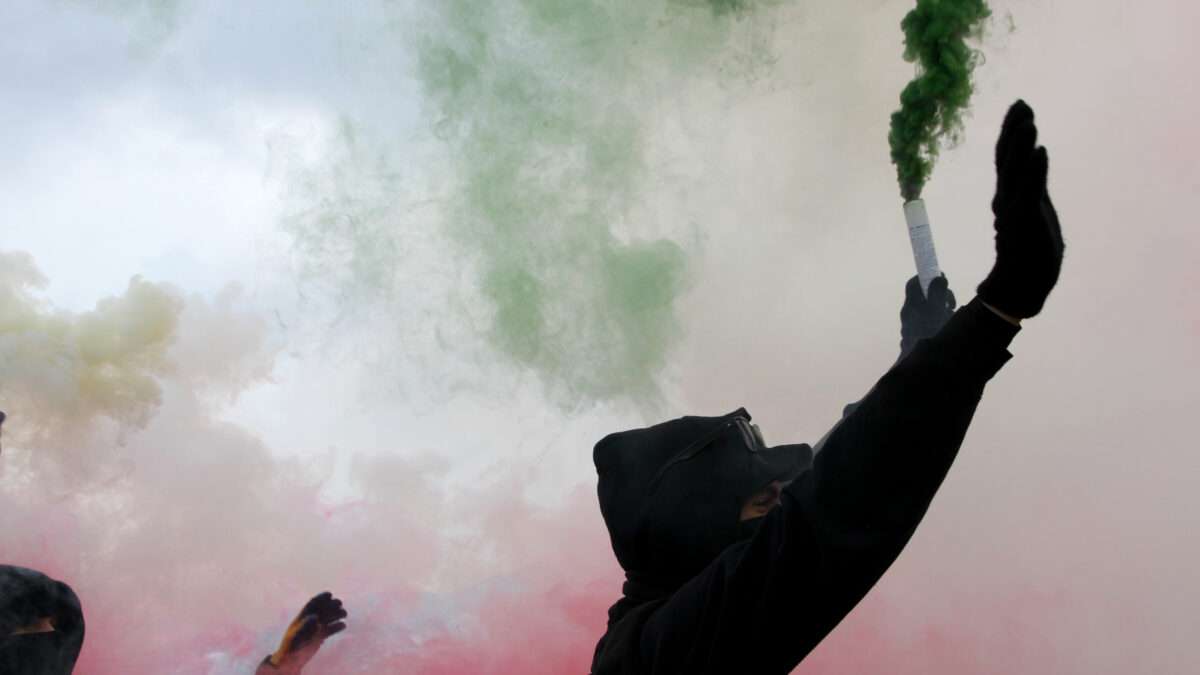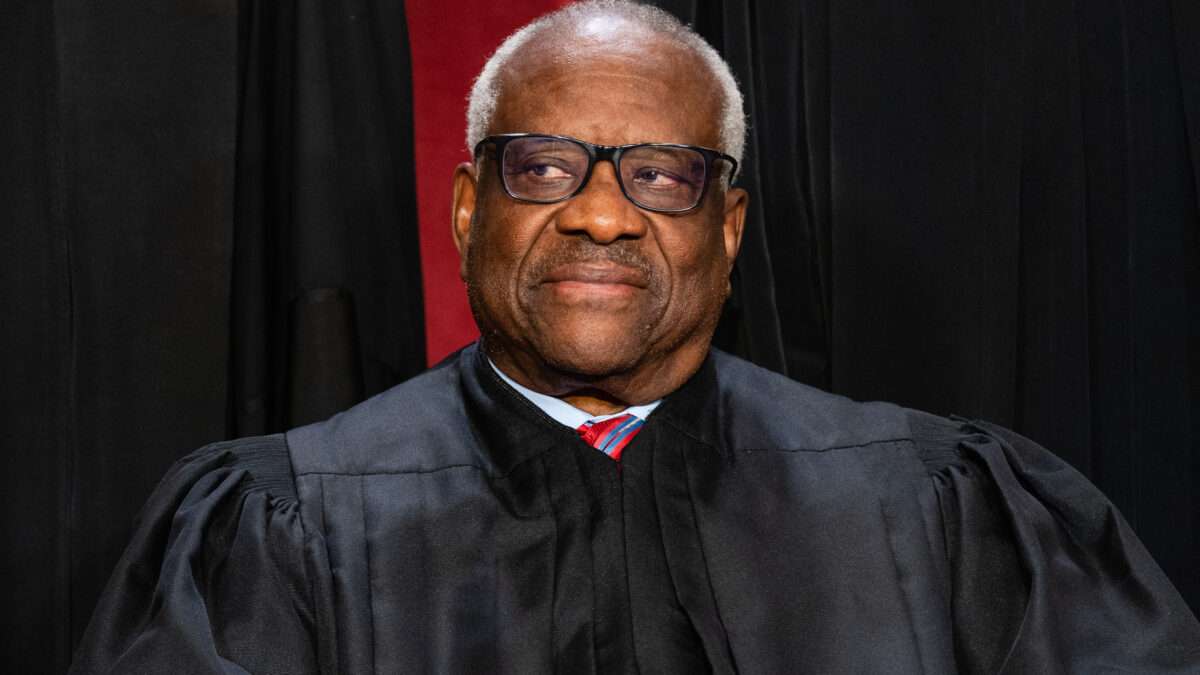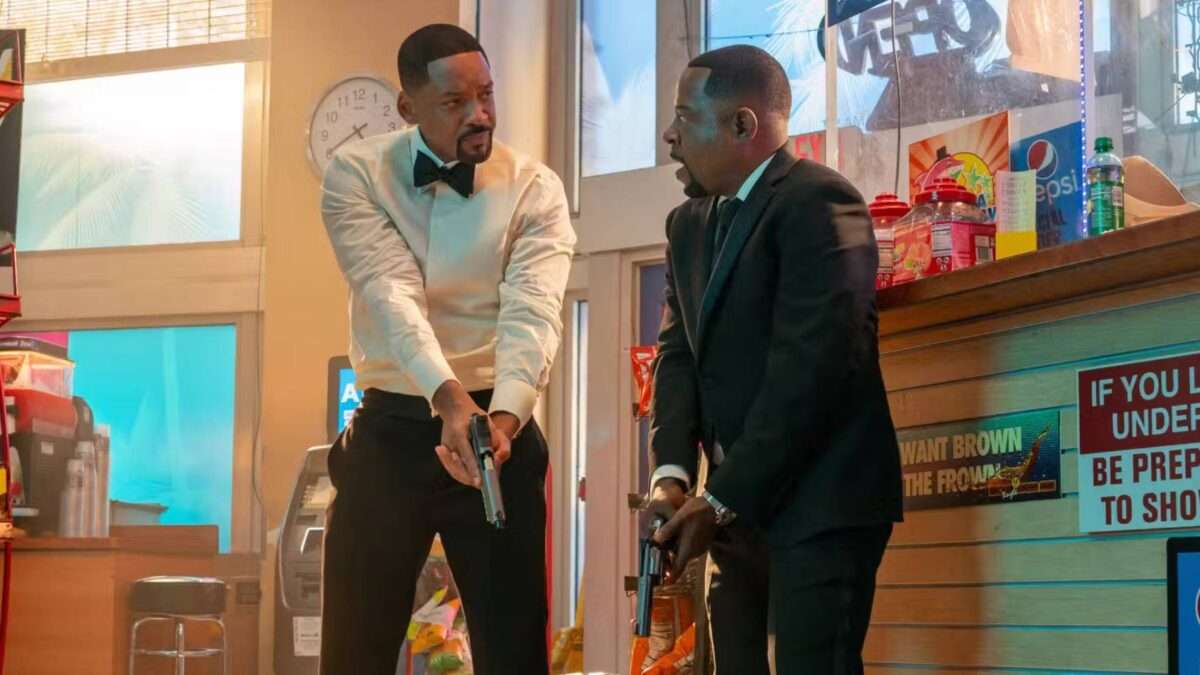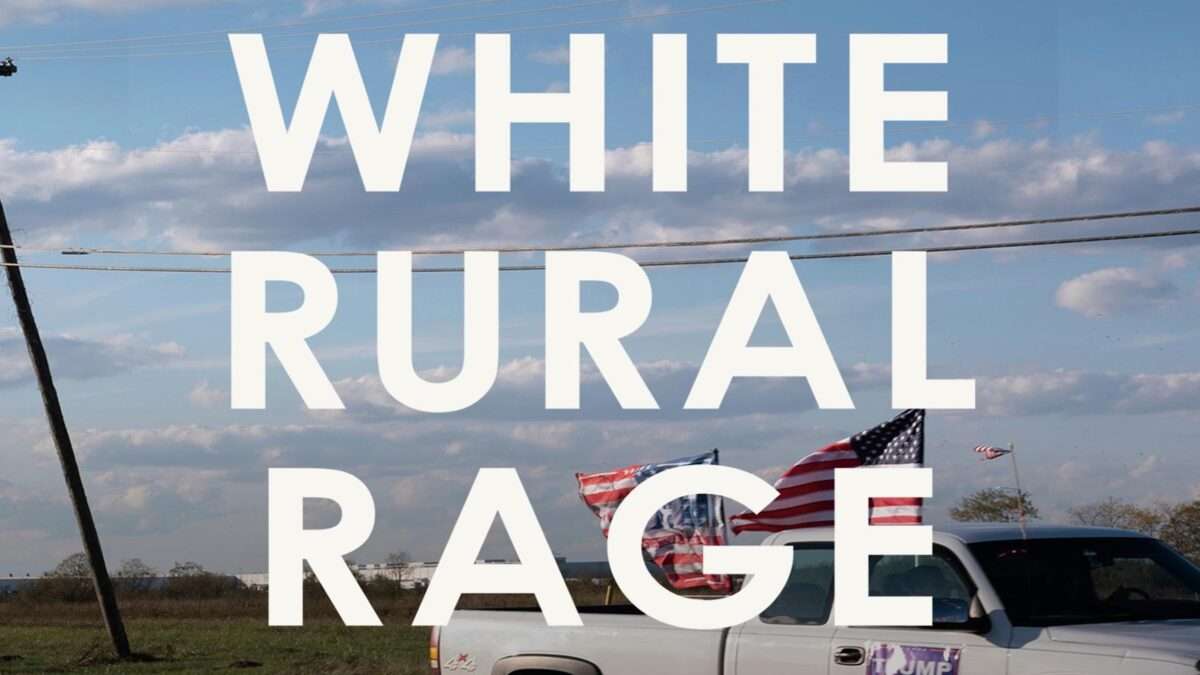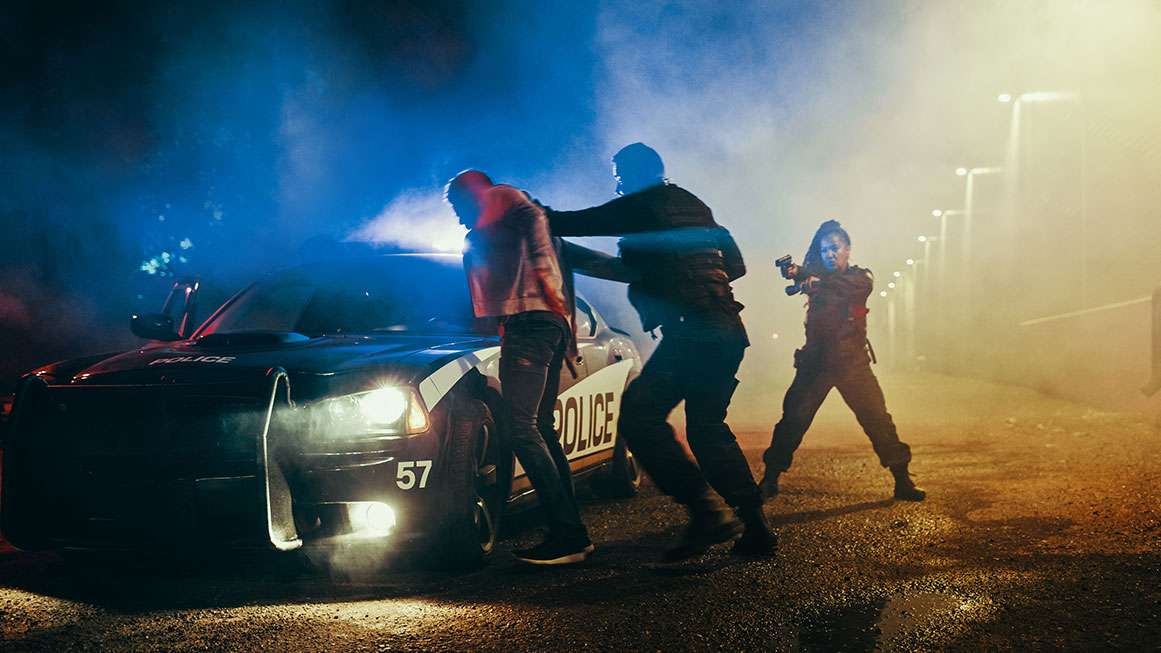Trump's New, More Sophisticated Take on Crime Still Does Not Show 'Homicides Are Skyrocketing'

Last week, the Trump campaign falsely asserted that "homicides are skyrocketing in American cities under Kamala Harris." On Tuesday, the campaign offered a more nuanced and sophisticated critique of crime data cited by the Democratic presidential nominee. But it still does not support the earlier claim, which is inconsistent with numbers from several sources.
A "memorandum" headlined "Joe Biden's Lies on Crime" (a title that makes you wonder whether Trump forgot who his opponent is) notes that the FBI changed its crime data collection methods in 2021, switching from the old Uniform Crime Reporting (UCR) program to the new National Incident-Based Reporting System (NIBRS). The transition, which was aimed at generating "new and better data," resulted in a big decline in the number of participating law enforcement agencies. According to the Bureau of Justice Statistics, the share of the population covered by participating agencies fell from the previous norm of about 95 percent to just 65 percent in 2021.
"The FBI's website reveals that the Q1 2024 data Joe Biden is citing comes from just 71% of the nation's law enforcement agencies," the Trump campaign says. "That means crime data from nearly one third of jurisdictions is missing." The overall NIBRS participation rate, which is relevant in assessing the FBI's final estimates for any given year, is higher: The FBI says 15,724 of 18,884 eligible agencies, or 83 percent, submitted data for 2022. The overall population coverage rate had risen to 85 percent by 2023. Still, the decline in participation since 2020 is a widely recognized problem.
The Trump campaign notes that "the FBI attempts to 'estimate' crime data for non-reporting agencies using a 'statistical weight' from reporting agencies similar in size and type"—a "practice of estimating crime numbers for agencies with missing data" that "has been going on since the 1960s." But historically, the missing data represented around 5 percent of the population, compared to 15 percent in 2023. A bigger gap magnifies the potential for error.
That is a perfectly reasonable point. But does it mean that homicides are, in fact, "skyrocketing"? No.
Nationwide, the FBI's preliminary numbers indicate, murders fell by 26 percent in the first quarter of this year compared to the same period last year. But other sources also report that homicides are falling this year, albeit by smaller percentages.
Based on a sample of 277 cities, AH Datalytics reports a 17.3 percent drop in murders so far this year, which is very large compared to historical trends. Most of these numbers come from "official" sources, meaning they were reported by local police departments or municipal governments. Some were compiled by state governments, and some came from local news outlets that track crime.
The Council on Criminal Justice (CCJ), based on data from 39 cities for the first half of 2024, reports that "most violent crimes," including homicide, "are at or below levels seen in 2019," the year before a huge spike in murders (which, as Trump wants us to forget, happened during his administration). The CCJ says the drop in homicides through June in "the 29 study cities providing data for that crime" was 13 percent.
According to a report from the Major Cities Chiefs Association (MCCA) that covers 69 cities during the same period, the total number of homicides fell by 17.4 percent. That is strikingly similar to the AH Datalytics estimate, although the latter analysis covers a lot more cities—including New York, which was not part of the MCCA sample but saw a 10 percent drop in homicides, according to AH Datalytics.
Instead of trying to defend its recent claim that "homicides are skyrocketing," the Trump campaign widens the focus, arguing that the National Crime Victimization Survey (NCVS), which includes crimes that are not reported to police, provides a more accurate picture of what is happening. The NCVS is not relevant in assessing homicide trends, since it does not cover homicides—the most serious violent crime and the one that is hardest to miss. And although the Trump campaign's criticism of the FBI numbers focuses on what happened in the first quarter of 2024, we do not yet have NCVS data for 2023, let alone this year.
The NCVS, like the FBI's system, has both strengths and weaknesses. But the Trump campaign deems it "by far the most credible and reliable barometer of crime nationwide." The NCVS, it says, "reveals that between 2020 and 2022 (the most recent year for which data is available), there was a 43% increase in violent crime, 58% increase in rape, 89% increase in aggravated assault, and a 56% increase in robbery."
Although these numbers omit 2023 and 2024, the Trump campaign wants us to believe they tell the true story of crime during the Biden administration. But the divergence between the NCVS and FBI numbers, especially in 2022, presents a puzzle that cannot be resolved simply by observing that the NCVS includes unreported crimes.
In 2002, when the FBI reported an overall 2 percent decline in violent crime, the NCVS results indicated a whopping 75 percent increase. Again, the latter number does not include homicide, which according to the FBI fell by 7 percent in 2022. But it does include respondents' reports of rape, which were up 58 percent, compared to the 6 percent drop estimated by the FBI; robbery, which rose by 47 percent according to the NCVS but only 1 percent according to the FBI; and aggravated assault, which more than doubled according to the survey but fell by 2 percent in the FBI's tally.
"Both too much and too little can be made of the divergence between the UCR and NCVS violent crime rates in 2022," the CCJ notes. "Divergent change in a single year should be viewed in the context of the similar long-term trends in the two indicators—and both sources show an appreciable decline in violent crime since the early 1990s." Still, "changes in the UCR and NCVS violent crime rates have rarely differed as much as they did" in 2022.
The 2021 changes in the FBI's reporting system and the concomitant decline in participation do not seem relevant here, since the participation rate was substantially higher in 2022 than it was in 2021. But if crime victims are increasingly disinclined to contact the police, that could help explain the striking 2022 divergence between the NCVS results and the FBI numbers.
According to the NCVS, the CCJ notes, "approximately 52% of serious violent crimes were reported to the police in 2021 and 48% in 2022, a relative decrease of nearly 8%. The decline in reporting crimes to the police was particularly large for aggravated assault, falling from 61% in 2021 to 50% in 2022, a decrease of 18%." But these changes in reporting behavior do not come close to fully accounting for the enormous differences between the NCVS and UCR numbers for 2022.
Beyond the difference between reported and unreported crimes, the NCVS and the FBI's system use different methods and measure somewhat different things. "As a household-based survey," the CCJ notes, "the NCVS does not include people who are homeless or those who live in institutions such as prisons, jails, and nursing homes. It also excludes crimes of violence against persons under 12 years of age. If persons included in the survey have experienced changes in violence that differ from the changes experienced by those excluded from the survey, that could help account for some of the divergence in violence rates."
The Bureau of Justice Statistics notes other possibly relevant differences between the two sources. For example, "the NCVS includes, but the [FBI system] excludes, attempted robberies, simple assault, [and] verbal threats of crime." The FBI system "includes, but the NCVS excludes, homicide, arson, commercial crimes, and human trafficking." The two sources also use different definitions of some crimes.
Another possible factor: While the FBI's 2022 numbers covered the calendar year, the 2022 NCVS asked about crimes experienced from July 1, 2021, through November 30, 2022. "Since the NCVS shows an increase in violent crime," The Marshall Project's Weihua Li and Jamiles Lartey suggest, "it's potentially because violent crime rates were higher in the latter part of 2021." They also note that "the victimization survey is historically much more volatile from one year to the next," suggesting "it may be influenced by statistical noise."
The Trump campaign describes the FBI's quarterly numbers as "garbage" and "fake statistics." But notwithstanding the preliminary nature of those numbers and the challenges associated with the transition to the new reporting system, they are broadly consistent, in direction if not magnitude, with what other sources indicate.
"Right now," Li and Lartey reported in June, "every source points to a decrease in violent crime." They quoted University of Miami criminologist Alex Piquero, an adviser to the CCJ Crime Trends Working Group, who said "the FBI's Q1 2024 data is incomplete, not inaccurate," adding: "There's no fudging of the numbers, and the drop is real. The question, of course, is how big that drop will be, and then how big that drop will be across crime types. That's the thing that we just don't fully grasp yet."
The post Trump's New, More Sophisticated Take on Crime Still Does Not Show 'Homicides Are Skyrocketing' appeared first on Reason.com.



